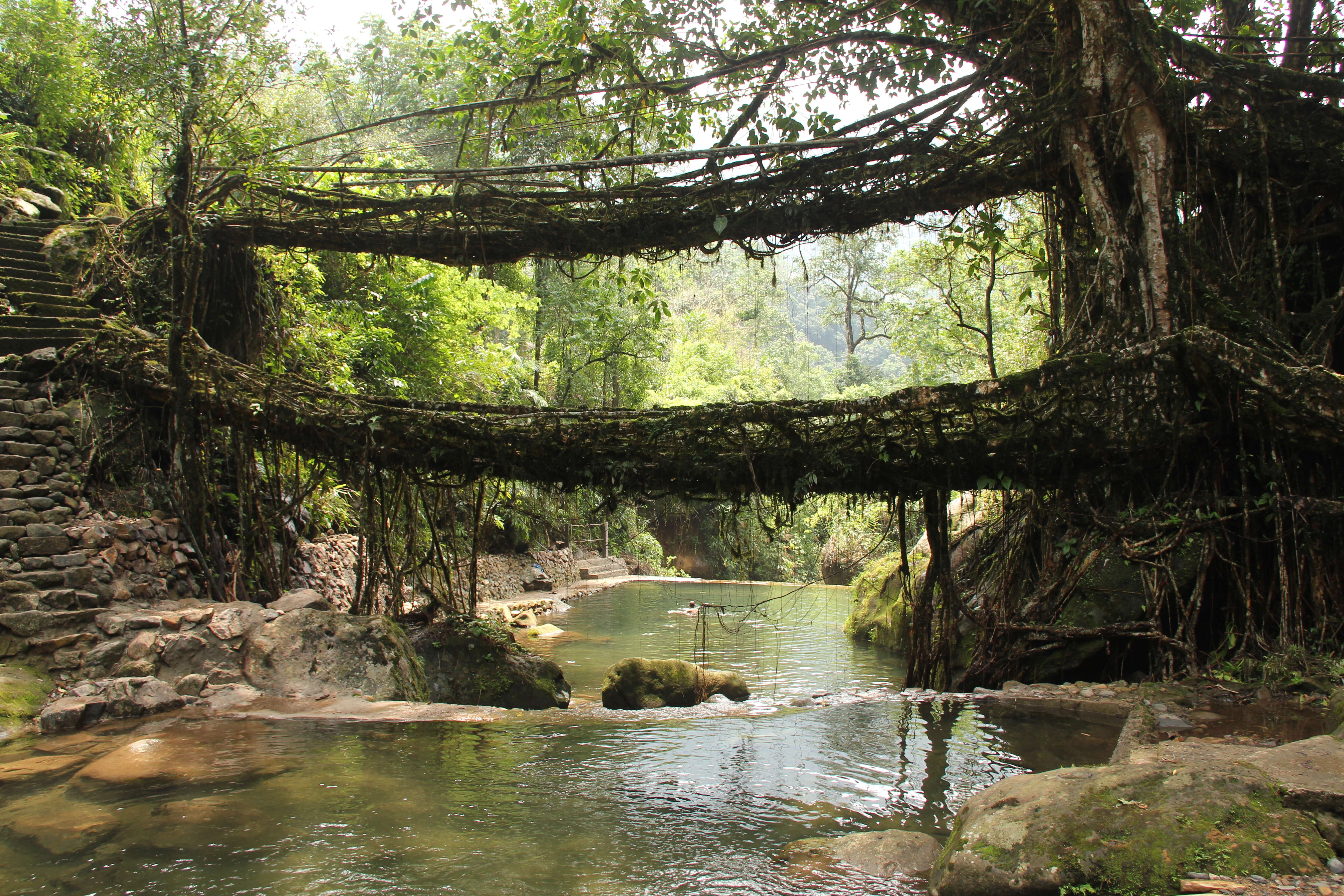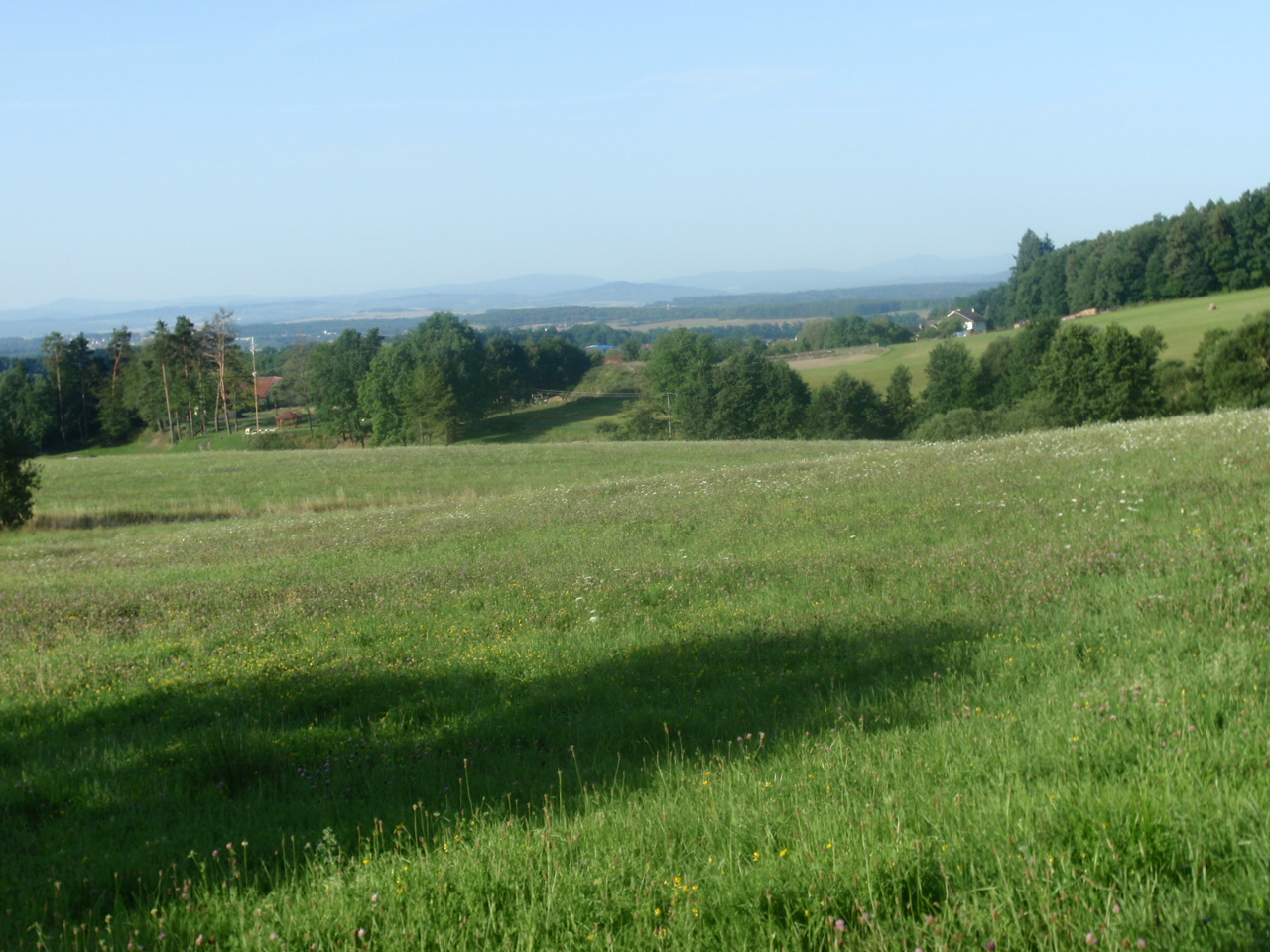|
Fab Tree Hab
The Fab Tree Hab is a hypothetical ecological home design developed at MIT by Mitchell Joachim, Javier Arbona and Lara Greden. With the idea of easing the burden humanity places on the environment with conventional housing by growing "living, breathing" tree homes. It would be built by allowing native trees to grow over a computer-designed (CNC) removable plywood scaffold. Once the plants are interconnected and stable, the plywood would be removed and reused. MIT is experimenting with trees that grow quickly and develop an interwoven root structure that's soft enough to "train" over the scaffold, but then hardens into a more durable structure. The inside walls would be conventional clay and plaster. An old methodology new to buildings is introduced in this design: pleaching. Pleaching is a method of weaving together tree branches to form living archways, lattices, or screens. The technique is also named " aeroponic culture". The load-bearing part of the structure uses trees t ... [...More Info...] [...Related Items...] OR: [Wikipedia] [Google] [Baidu] |
Tree Shaping
Tree shaping (also known by several other alternative names) uses living trees and other woody plants as the medium to create structures and art. There are a few different methods used by the various artists to shape their trees, which share a common heritage with other artistic horticultural and agricultural practices, such as pleaching, bonsai, espalier, and topiary, and employing some similar techniques. Most artists use grafting to deliberately induce the inosculation of living trunks, branches, and roots, into artistic designs or functional structures. Tree shaping has been practiced for at least several hundred years, as demonstrated by the living root bridges built and maintained by the Khasi people of India. Early 20th century practitioners and artisans included banker John Krubsack, Axel Erlandson with his famous circus trees, and landscape engineer Arthur Wiechula. Several contemporary designers also produce tree shaping projects. History Some species of tree ... [...More Info...] [...Related Items...] OR: [Wikipedia] [Google] [Baidu] |
Eco-design
Ecological design or ecodesign is an approach to designing products and services that gives special consideration to the environmental impacts of a product over its entire lifecycle. Sim Van der Ryn and Stuart Cowan define it as "any form of design that minimizes environmentally destructive impacts by integrating itself with living processes." Ecological design can also be defined as the process of integrating environmental considerations into design and development with the aim of reducing environmental impacts of products through their life cycle. The idea helps connect scattered efforts to address environmental issues in architecture, agriculture, engineering, and ecological restoration, among others. The term was first used by John Button in 1998. Ecological design was originally conceptualized as the “adding in “of environmental factor to the design process, but later turned to the details of eco-design practice, such as product system or individual product or indust ... [...More Info...] [...Related Items...] OR: [Wikipedia] [Google] [Baidu] |
Landscape
A landscape is the visible features of an area of land, its landforms, and how they integrate with natural or man-made features, often considered in terms of their aesthetic appeal.''New Oxford American Dictionary''. A landscape includes the physical elements of geophysically defined landforms such as (ice-capped) mountains, hills, water bodies such as rivers, lakes, ponds and the sea, living elements of land cover including indigenous vegetation, human elements including different forms of land use, buildings, and structures, and transitory elements such as lighting and weather conditions. Combining both their physical origins and the cultural overlay of human presence, often created over millennia, landscapes reflect a living synthesis of people and place that is vital to local and national identity. The character of a landscape helps define the self-image of the people who inhabit it and a sense of place that differentiates one region from other regions. It is t ... [...More Info...] [...Related Items...] OR: [Wikipedia] [Google] [Baidu] |
Architectural Theory
Architecture is the art and technique of designing and building, as distinguished from the skills associated with construction. It is both the process and the product of sketching, conceiving, planning, designing, and constructing buildings or other structures. The term comes ; ; . Architectural works, in the material form of buildings, are often perceived as cultural symbols and as works of art. Historical civilizations are often identified with their surviving architectural achievements. The practice, which began in the prehistoric era, has been used as a way of expressing culture for civilizations on all seven continents. For this reason, architecture is considered to be a form of art. Texts on architecture have been written since ancient times. The earliest surviving text on architectural theories is the 1st century AD treatise ''De architectura'' by the Roman architect Vitruvius, according to whom a good building embodies , and (durability, utility, and beauty). C ... [...More Info...] [...Related Items...] OR: [Wikipedia] [Google] [Baidu] |
Sustainable Technologies
Environmentally sustainable design (also called environmentally conscious design, eco-design, etc.) is the philosophy of designing physical objects, the built environment, and services to comply with the principles of ecological sustainability and also aimed at improving the health and comfortability of occupants in a building.McLennan, J. F. (2004), The Philosophy of Sustainable Design Sustainable design seeks to reduce negative impacts on the environment, the health and well-being of building occupants, thereby improving building performance. The basic objectives of sustainability are to reduce the consumption of non-renewable resources, minimize waste, and create healthy, productive environments. Theory The sustainable design intends to "eliminate negative environmental impact through skillful sensitive design". Manifestations of sustainable design require renewable resources and innovation to impact the environment minimally, and connect people with the natural environmen ... [...More Info...] [...Related Items...] OR: [Wikipedia] [Google] [Baidu] |
306090
''306090'' was an independent architecture journal and book series produced from 2002 to 2013 by nonprofit arts stewardship 306090, Inc., and distributed by Princeton Architectural Press. 306090 published nine multi-authored thematic journal volumes, six thematic books, and one special issue that served as the official catalog for the United States Pavilion at the 2010 Venice Biennale of Architecture. Contributors to each of the thematic issues ranged in experience, from students to professionals distinguished in their fields. The series brought together diverse writings and projects to explore “contemporary issues in architecture from every angle,” many issues containing work spanning the arts and sciences. Contributors include: Jesse Reiser, Kengo Kuma, Lisa Sigal, James Buckhouse, Heather Roberge, Lori Brown (architect), Lori Brown, Hal Foster, Rafael Cardenas, Beatriz Colomina, Galia Solomonoff, Cecil Balmond, Gregg Pasquarelli, Hilary Sample, Craig Dworkin, Kent Bloomer, E ... [...More Info...] [...Related Items...] OR: [Wikipedia] [Google] [Baidu] |
Living Machine
Living Machine is a form of ecological sewage treatment. Similar to Solar Aquatics Systems, the latest generation of the technology is based on fixed-film ecology. The Living Machine system was commercialized and is marketed by Living Machine Systems, L3C, a corporation based in Charlottesville, Va, USA. Examples Examples of Living Machines are mechanical composters for industrial kitchens, effective microorganisms as fertiliser for agricultural purposes, and Integrated Biotectural systems in landscaping and architecture like Earthships or the IBTS Greenhouse. Components like tomato plants (for more water purification) and fish (for food) have been part of the living, ecosystem-like designs. The theory does not limit the size of the system, or the amount of species. One design optimum is a natural ecosystem which is designed for a special purpose like a sewage treating wetland in a suitable ecosystem for the locality. Another optimum is an economically viable system returni ... [...More Info...] [...Related Items...] OR: [Wikipedia] [Google] [Baidu] |
Dogwood
''Cornus'' is a genus of about 30–60 species of woody plants in the family Cornaceae, commonly known as dogwoods, which can generally be distinguished by their blossoms, berries, and distinctive bark. Most are deciduous trees or shrubs, but a few species are nearly herbaceous perennial subshrubs, and some species are evergreen. Several species have small heads of inconspicuous flowers surrounded by an involucre of large, typically white petal-like bracts, while others have more open clusters of petal-bearing flowers. The various species of dogwood are native throughout much of temperate and boreal Eurasia and North America, with China, Japan, and the southeastern United States being particularly rich in native species. Species include the common dogwood ''Cornus sanguinea'' of Eurasia, the widely cultivated flowering dogwood ''( Cornus florida)'' of eastern North America, the Pacific dogwood ''Cornus nuttallii'' of western North America, the Kousa dogwood '' Cornus ... [...More Info...] [...Related Items...] OR: [Wikipedia] [Google] [Baidu] |
Live Oak
Live oak or evergreen oak is any of a number of oaks in several different sections of the genus ''Quercus'' that share the characteristic of evergreen foliage. These oaks are not more closely related to each other than they are to other oaks. The name ''live oak'' comes from the fact that evergreen oaks remain green and "live" throughout winter, when other oaks are dormant and leafless. The name is used mainly in North America, where evergreen oaks are widespread in warmer areas along the Atlantic coast from southeast Virginia to Florida, west along the Gulf Coast to Louisiana and Mexico, and across the southwest to California. Evergreen oak species are also common in parts of southern Europe and south Asia, and are included in this list for the sake of completeness. These species, although not having "live" in their common names in their countries of origin, are colloquially called live oaks when cultivated in North America. When the term live oak is used in a specific ra ... [...More Info...] [...Related Items...] OR: [Wikipedia] [Google] [Baidu] |
Latticework
__NOTOC__ Latticework is an openwork framework consisting of a criss-crossed pattern of strips of building material, typically wood or metal. The design is created by crossing the strips to form a grid or weave. Latticework may be functional – for example, to allow airflow to or through an area; structural, as a truss in a lattice girder; used to add privacy, as through a lattice screen; purely decorative; or some combination of these. Latticework in stone or wood from the classical period is also called Roman lattice or ''transenna'' (plural ''transenne''). In India, the house of a rich or noble person may be built with a ''baramdah'' or verandah surrounding every level leading to the living area. The upper floors often have balconies overlooking the street that are shielded by latticed screens carved in stone called jalis which keep the area cool and give privacy. Examples File:Amber Fort Screen (6652771501).jpg, Lattice screen at Amber Fort File:Masuleh Window.j ... [...More Info...] [...Related Items...] OR: [Wikipedia] [Google] [Baidu] |
Mitchell Joachim
Mitchell Joachim (pronounced /jo-ak-um/; born February 3, 1972) is an architect and urban designer. He is the Co-Founder of Terreform ONE, and an Associate Professor of Practice at NYU. Previously he was the Frank Gehry Chair at University of Toronto and a faculty member at Pratt, Columbia, Syracuse, Washington, The New School, and the European Graduate School. Recognition Mitchell has been awarded a Fulbright Scholarship, LafargeHolcim Foundation Award, ARCHITECT R+D Award, Senior Fellowship at TED 2011, Moshe Safdie and Assoc. Fellowship, and Martin Society for Sustainability Fellowship at MIT. He won the Zumtobel Group Award, History Channel and Infiniti Design Excellence Award for the City of the Future, and Time Magazine Best Invention of the Year 2007, MIT Car w/ MIT Smart Cities. His project, Fab Tree Hab, has been exhibited at MoMA and widely published. He was selected by Wired magazine for "The 2008 Smart List: 15 People the Next President Should Listen To". R ... [...More Info...] [...Related Items...] OR: [Wikipedia] [Google] [Baidu] |




.jpg)
